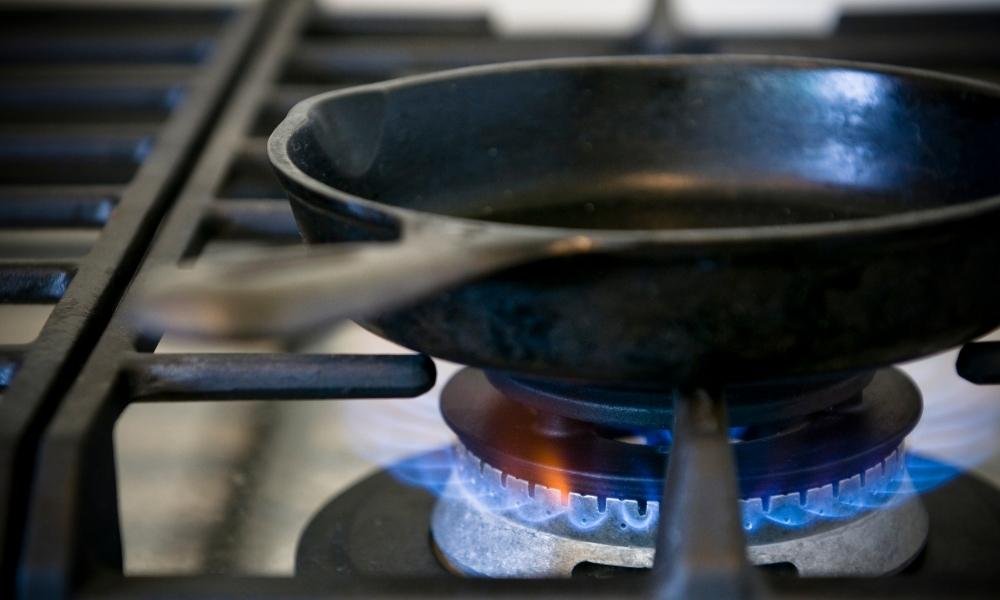Heat retention is considered one of the most important aspects of a cookware. But one of our readers asked us a question, ” Why is heat retention important when you have a heat source underneath the cookware?
We thought many people would have this same question and so decided to answer it once and for all.
What Is Heat Retention?
Heat retention is simply the ability of the cookware to hold on to the heat.
When cooking, heat from the stove is transferred to the food through the cookware. But it is not just the food that is heated. The heat dissipates into the environment as well. If a cookware has high heat retention, the heat transfer rate is slower. This allows for slow cooking of food, which helps retain nutrients and preserve the succulence of vegetables and meat. Owing to the low rate of heat transfer, the chances of burning food is lower too.
On the other hand, when heat retention is low, heat transfers quicker. It allows faster cooking. On the flip side, if you are not careful enough, the chances of burning are higher too.
And obviously better heat retention also means lesser consumption of gas as once it is heated, you can turn to a low flame and cook your food. Also, you can switch off the gas 5-10 minutes earlier and allow the food to cook in the residual heat.
You may also like: 7 Best Pressure Cookers In India
Factors Affecting Heat Retention

Now that you know what heat retention is, let us explore the factors affecting heat retention.
Heat retention depends mainly on the material, thickness and surface area of the cookware. Cast iron and stainless steel have higher heat retention capacity, while aluminium and copper have low heat retention capacity.
The thickness of the material is also a predominant factor because the thicker the material, more the matter to hold on to the heat.
We tested cast iron and aluminium cookware to check how thickness and material affected the heat retention capacity. We heated them up to 200 °C ( 392F) and checked how long it took to drop the temperature to 100 °C ( 212F)
Nonstick aluminium pan with 2.5mm thickness had the worst heat retention capacity. It dropped the temperature in just 3 minutes. But, when it is thicker at 5 mm, the heat retention is way better. It took almost 7 minutes to drop the temperature. Thicker material also means it takes longer to heat up.
Similarly, when cast iron with 2.5mm thickness dropped the temperature in just 6.5 minutes, the one with 5mm thickness dropped in 9 minutes.
You may also like our article on Best Air Fryers In India
Significance of Heat Retention In Cooking
So why do chefs fuss about a cookware’s heat retention capacity? As mentioned, better heat retention means a lower possibility of burning food. Yet another reason is that cookware with better heat retention ensures better browning and gives perfect sears.
When you drop ingredients at room temperature into a thin hot aluminium pan, the heat transfer is immediate. But this also means the hot pan loses its temperature and it takes some time to reach back to the high temperature. As a result, the ingredients tend to steam or stew rather than brown. In a professional kitchen, this wouldn’t be a problem as they use commercial stoves that generate high levels of heat. But that is not the case in a domestic kitchen. Moreover, if you are using a nonstick pan, they shouldn’t be heated above 260 C ( 500F). So, the sluggish rate of heating will affect the browning.
On the other hand, if you were frying in a cast iron or stainless steel pan, the temperature wouldn’t drop drastically owing to its higher heat retention capacity. So, even though the cooking may be slower, you get perfectly seared steaks and evenly browned chicken fry.
So, to conclude, heat retention is important as it not only helps preserve nutrients but also gives better sears, reduces chances of burning and saves fuel.
